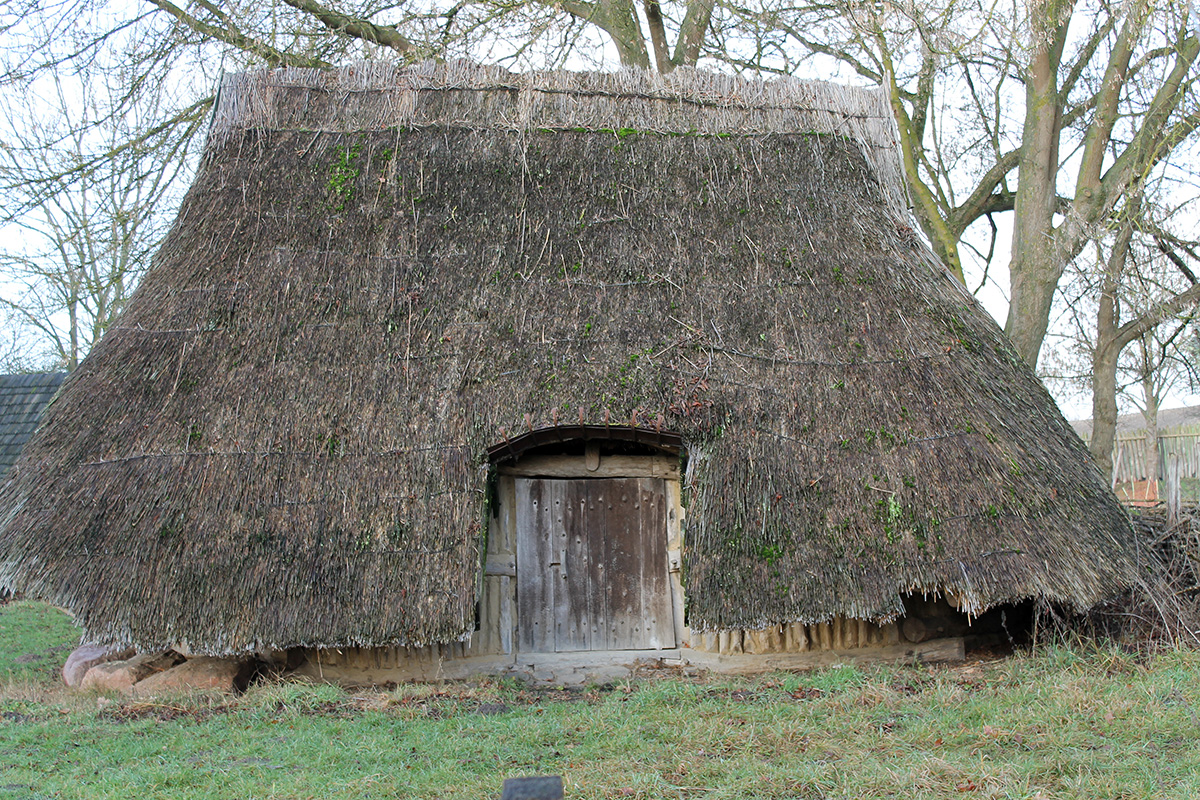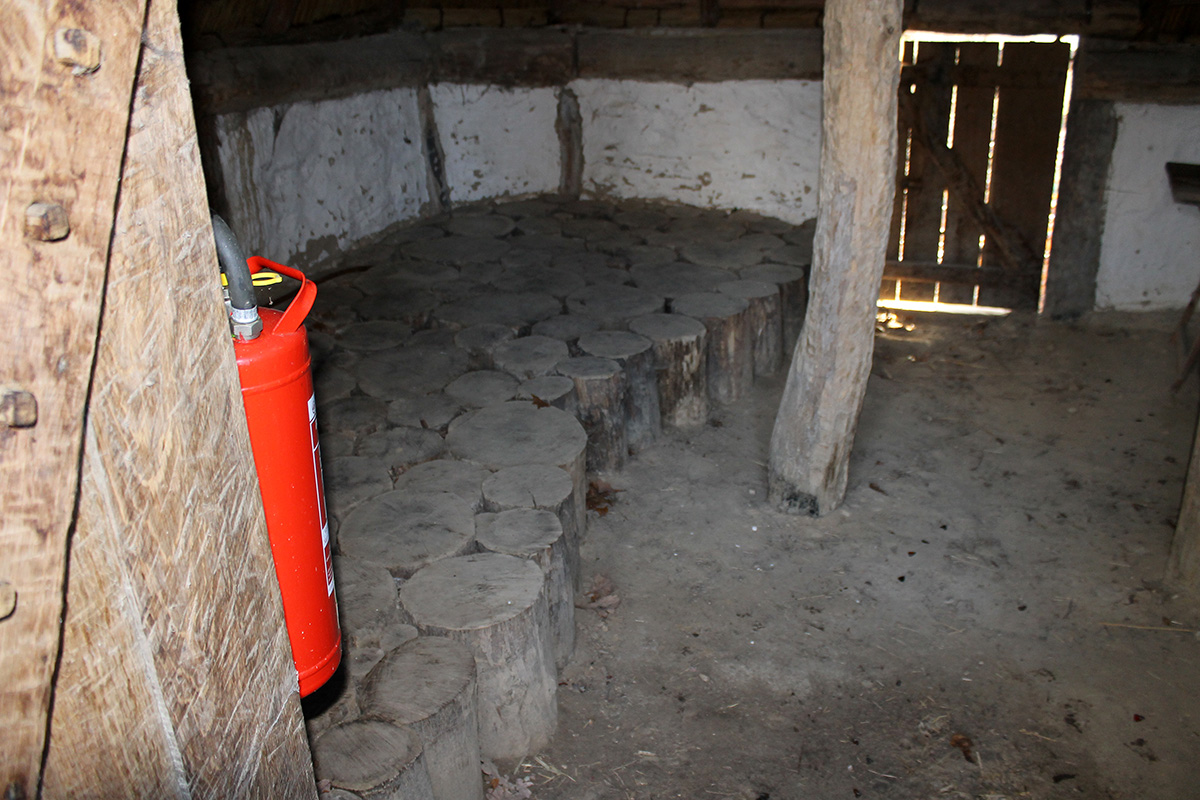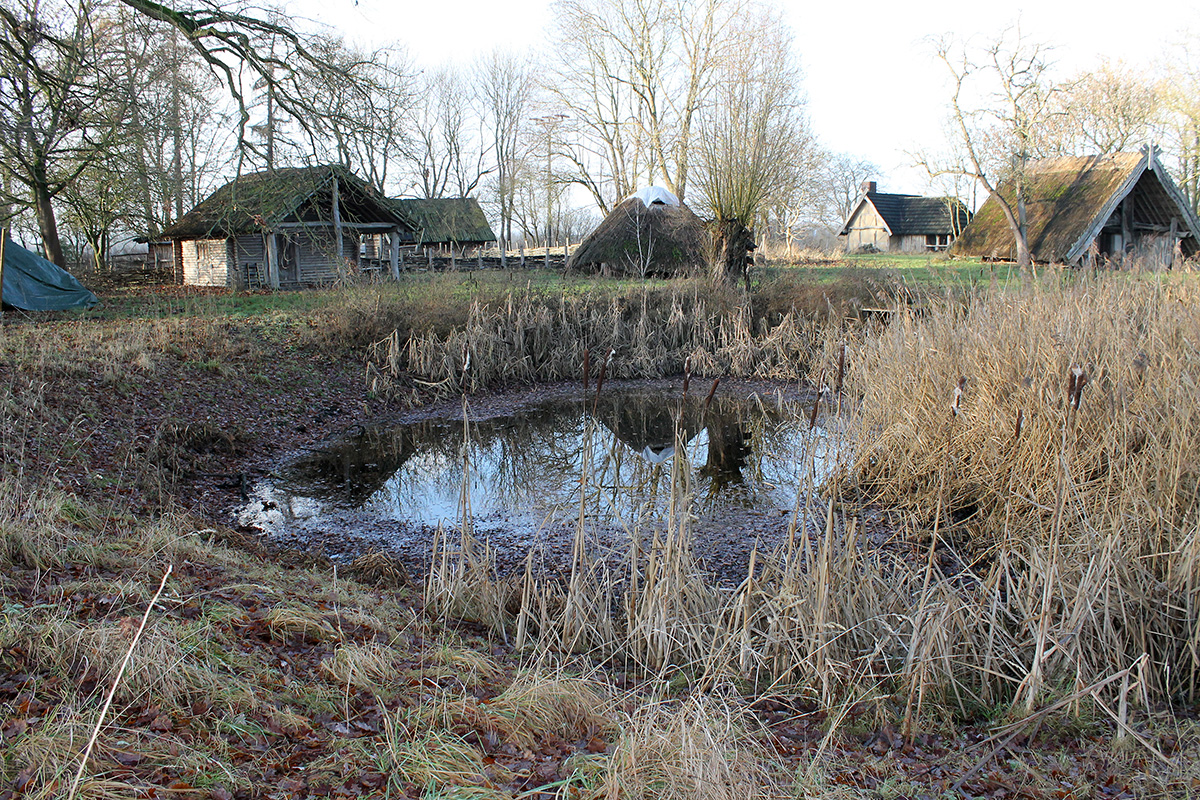Here is another museum dedicated to the reconstruction of West Slavic settlements. It’s a cute European village with a good road, lanterns and cleanness.
An indispensable gate tower is suspicious at a glance. It’s a neat stylization.
It’s obvious that although the museum is open, it is not intended for visits in winter.
The houses are stylizations based on some early medieval grounds.
Many museums in Europe were built in the 1990-s and even earlier. Slavendorf is no exception, it has been working since 1994. There are lots of old things here.
It’s local ethnography, an interesting variant of the fence.
In many West Slavic museums of living history we can find such a barn. Broach roof, wattled walls and an indispensable circular area are present. Their design has more to do with ethnography than with the Middle Ages.
Unusual bed, which I’ve never met in the historical sources, a disgusting door and a compulsory fire extinguisher at the single photo.
One of the main problems of Slavendorf is a breach of reed roofs technology. Between the layers of reed they lay synthetic heat insulation. Obviously, they made it for keeping warmth in the houses. In fact, the insulation absorbs water like a sponge and the reed rots quickly.


To make the reed completely rotten, it is necessary to cover this high-tech sandwich with a waterproof wrap. It’s an infallible method.
Inside the house everything is made so that tourists could spend a night in relative comfort. Because of this, there are stylized beds.
The territory is very beautiful. Oaks and pond are very atmospheric.
A gingerbread house.
A decorated vise for wood.
Old houses, in spite of everything, look noble.
I can confidently say that in all European museums, where I’ve been, doors are miserable. They are either absolutely unauthentic, either stylized or too large. Usually all-in one.
An interesting ladder, though it has no historical grounds.
The surfaces are treated in imitation of old times, but very clumsily. It’s not like truth.
A stylized bolt.
I was pleased by Slavendorf’s anonymous manufacturer of models. There are lots of them here.
A house built in imitation of early medieval communal houses.
This table with different legs reflects well the essence of the museum. The front legs are made of birch with bark (that’s strange), the rear legs are made of beams (that’s convenient to manufacture).
We’re not impressed. Let’s go further.





















